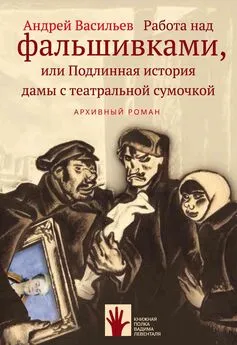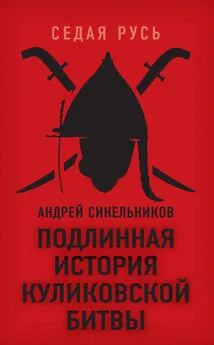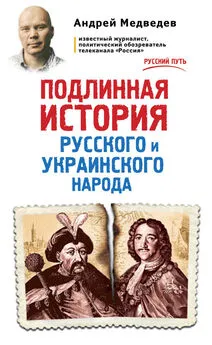Андрей Васильев - Работа над фальшивками, или Подлинная история дамы с театральной сумочкой
- Название:Работа над фальшивками, или Подлинная история дамы с театральной сумочкой
- Автор:
- Жанр:
- Издательство:ИД «Городец»
- Год:2021
- Город:Москва
- ISBN:978-5-907358-00-3
- Рейтинг:
- Избранное:Добавить в избранное
-
Отзывы:
-
Ваша оценка:
Андрей Васильев - Работа над фальшивками, или Подлинная история дамы с театральной сумочкой краткое содержание
Как высочайшего класса расследование эта книга подробно рассказывает о потайных механизмах функционирования арт-рынка; как роман — обращается к глубинам человеческой природы.
Работа над фальшивками, или Подлинная история дамы с театральной сумочкой - читать онлайн бесплатно ознакомительный отрывок
Интервал:
Закладка:
Приложение 7
Предпродажное досье на «Портрет Елизаветы Яковлевой», датированное 2015 годом
KAZIMIR MALEVICH
PORTRAIT OF E. YAKOVLEVA

KAZIMIR MALEVICH
Portrait of E. Yakolevna
1932
Oil on canvas
82 x 64,5 cm
Signed on the back in the upper left corner “K M” with a black square between the initials
Provenance:
Family of E. Yakovleva, Saint Petersburg
Private Collection, Saint Petersburg
Private Collection Mr. and Mrs. van den Hurk, The Netherlands
Exhibited:
Kazimir Malevich and the Russian Avant-Garde, Stedelijk Museum, Amsterdam, 19 October 2013 — February 2, 2014
Kazimir Malevich and the Russian Avant-Garde, Bundeskunsthalle, Bonn, 8 March — June 22, 2014
Malevich, Tate Modern, London, 16 July — 26 October 2015
Literature:
Sophie Tates, Karen Kelly, Bart Rutten, Geurt Imanse (eds.), Kazimir Malevich and the Russian Avant-Garde , with contributions by Linda S. Boersma, Jewgenia Petrowa, Bart Rutten, Alexandra Schatskich, Noemi Smolik, Stedelijk Museum Amsterdam / Verlag der Buchhandlung Walter Konig, Cologne, 2013, English version, work illustrated on page 178
Sophie Tates, Karen Kelly, Bart Rutten, Geurt Imanse (eds).,Kazimir Malevich and the Russian Avant-Garde , with contributions by Linda S. Boersma, Jewgenia Petrowa, Bart Rutten, Alexandra Schatskich, Noemi Smolik, Stedelijk Museum Amsterdam / Verlag der Buchhandlung Walter Konig, Cologne, 2013, German version, work illustrated on page 177
Achim Borchardt-Hume (ed.), Malevich, with contributions by Iria Candela, Masha Chlenova, Nicholas Cullinan, Maria Gough, Maria Kokkori, Christina Lodder, John Milner and Evgenia Petrova, Tate Publishing, 2014, work illustrated on page 120
Andrei Nakov, Kazimir Malewicz Catalogue Raisonne, Societe Nouvelle Adam Biro, Paris, 2002, work illustrated on page 403
Charlotte Douglas, Suprematist Embroidered Ornament, Art Journal, March 1995, Vol. 54, Issue I, Spring 1995, work illustrated on page 45
Certificates:
Elena Basner
Andrei Nakov
In this poignant painting we come full circle from the Black Square, from color being sublimated in order to heighten the dramatic impact of the birth of suprematism, to color being one of the few ways in which Malevich could tacitly allude to the innovations he had pioneered ad that were now themselves suppressed.
DR. NICHOLAS CULLINAN, Director National Portrait Gallery, London




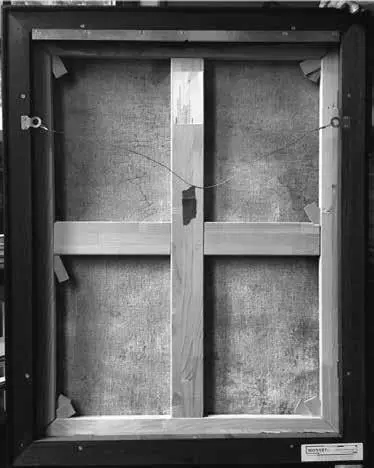
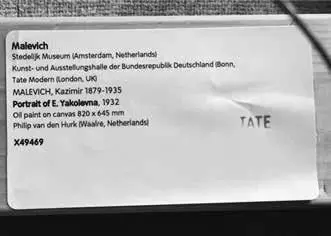

RETHINKING MALEVICH: NEW SCHOLARSHIP
Following Malevich's untimely death in 1935, Socialist Realism was declared to be the official artistic doctrine of the Soviet Union, pushing Malevich's art completely out of the public reach. It was only in 1962 that pressures on art and culture had eased, and these works surfaced again and research begun to investigate the importance of this impressive body of works. In this context, the works from the late 1920s and 1930s and until the artist's death, have proven very interesting to analyze as initially these late works, in which Malevich returned to a figurative content, used to be regarded as an ideological and aesthetic retreat from the high point of Suprematism. They were seen in an entirely negative light as being symptomatic of Malevich's compromise with (and ultimately defeat by) the Soviet regime, as well as epitomizing his betrayal of modernism. They were, as the art historian T. J. Clark put it so succinctly, “the scandal of modernist orthodoxy”.
As post-modernism replaced modernism as a dominant approach in Western art history, the emphasis in Malevich studies also changed, especially in relation to the artist's paintings of the late 1920s and early 1930s. Since the extensive display at the major retrospective of 1988-9, however, these paintings have become more of a focus of interest in their own right. Instead of being dismissed as merely repetitive and defeatist, they have been reassessed and reinterpreted. Now, instead of representing the eclipse of Suprematism, they are considered to be innovative and a continuation of the Suprematist enterprise, and even to represent a new phase of Suprematism.
Christina Lodder, “Malevich Scholarship: A Brief Introduction” in ed. Charlotte Douglas & Christina Lodder, Rethinking Malevich, London, The Pindar Press, 2007, pp. xix-xx
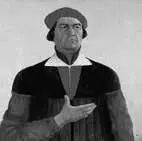
Self-Portrait (“Artist“), 1933
State Russian Museum, St. Petersburg

Portrait of Artist's Wife, 1933
State Russian Museum, St. Petersburg

Portrait of E. Yakovleva, 1932
Private Collection, The Netherlands
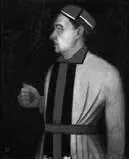
Portrait of Nikolai Punin, 1933
State Russian Museum, St. Petersburg
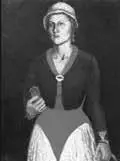
Portrait of the Artist's Wife, 1934
State Russian Museum, St. Petersburg
ARTISTIC CONTEXT OF THE LATE WORKS
In the context of the political changes occurring in Russia in the 1920s, modernist aesthetics have been declared bourgeois, while growing conservatism was imposed by Soviet cultural politics. The new aesthetics imposed by the system propagated a return to type of realism resembling late nineteenth century pictorial traditions. Nevertheless, it would be simplistic and reductive to solely interpret Malevich's late works solely through the prism of this political context.
[…] the work from the late 1920s and early 1930s roughly falls into two categories. The first is a series of often featureless figurines, whose stylized bodies, typically depicted against an equally stylized landscape, act as hybrids of the earlier suprematist compositions and themes and subjects from the very beginning of Malevich's career. Peasants has always been a common subject, as were woodcutters, group and close-up portraits, but now they are rendered in strident color schemes that bear no relation to observed reality, instead following a rationale that is determined from within the paintings themselves, very much in accordance with the logic of suprematism.
The secondis an altogether different body of portraits, some of them painted in a more overtly realist style, others with an oddly mannered posture evocative of early Italian Renaissance portraiture. Frequently, the sitters, whether members of the artist's family or more generic male or female workers, are dressed in garments that seem infused with suprematist color schemes or ornaments, such as coats or hats trimmed with contrasting stripes or a bright red bodice transfiguring the torso of its wearer into a solid volume of primary color. Neither of these groupings suggests that Malevich was inclined to abjure his radical pictorial inventions of the second half of the 1910s, nor do they suggest that he understood abstraction and figuration as mutually exclusive in the way in which he have come to view them under the influence of much later art-historical writing. This is made even more explicit by the fact that he frequently signed these canvases not just with his name, but with a small square. It is as if the more political pressures on avant-garde aesthetics grew and the more he ran the risk of his late work being mistaken for a “return to order“, the more Malevich wanted to make sure that his name became inseparable from the icon of suprematism, the Black Square.
AchimBorchardt-Hume, “An Icon for a Modern Age”, in Malevich, ed. Achim Borchardt-Hume, London, Tate Publishing, 2014, pp. 28-29
[The late works] are considered to be innovative and a continuation of the Suprematist enterprise, and even to represent a new phase of Suprematism.
PROF. CHRISTINA LODDER, President of the Malevich Society
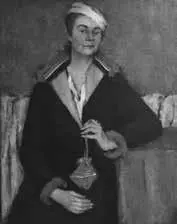
Portrait of E. Yakovleva, 1932
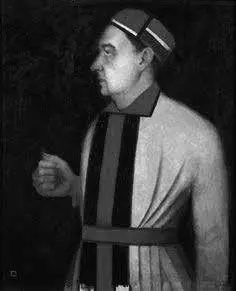
Portrait of Nikolai Punin, 1933
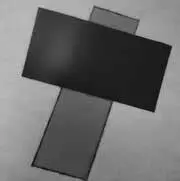
Suprematist Composition, c. 1919-1920

Mystic Suprematism (red cross on black circle), 1920-1922
The crucial example with which to conclude a consideration of various guises and shades of suprematism with the still-enigmatic late figurative works of Malevich's so- called 'Second Peasant Cycle' from the late 1920s and early 1930s, and the role and the function of color therein. These range from overly emphatic bands of pure color in works such as Head of a Peasant 1928-9 (illustrated on page 207 of the catalog), with blocks of red and green gesturing towards the furrow of a ploughed field, or the striated bands of pure color that act as horizon lines in Running Man 1930-1 (Centre Pompidou, Paris) and Three Female Figures c. 1930 (illustrated on page 212 of the catalog), through to the seemingly more orthodox figurative paintings such as Portrait of E. Yakolevna of 1932 (illustrated on page 120 of the catalog). In all of these, it is color that effects a rapprochement between the compositional norms of suprematism and the conflicting demands of figuration. The bold bands of red and green that adorn the coat collar of the sitter in Portrait of E. Yakolevna, or the red of her strangely quadrangular purse — both of which are strikingly at odds with the naturalism of this portrait — are perhaps a form of encoded or suppressed suprematism, and one that suggests itself precisely through these geometrical blocks of solid color. In this poignant painting we come full circle from the Black Square, from color being sublimated in order to heighten the dramatic impact of the birth of suprematism, to color being one of the few ways in which Malevich could tacitly allude to the innovations he had pioneered ad that were now themselves suppressed. Here, by once again 'pouring color into squares', as Matyushin had characterized (or caricatured) the paintings from the 0.10 exhibition, Malevich ingeniously used color to infuse his figurative paintings with the pioneering developments of his suprematist period, which here becomes an adornment or badge of honor that effects a rapprochement between the aesthetics of both.
Читать дальшеИнтервал:
Закладка:
